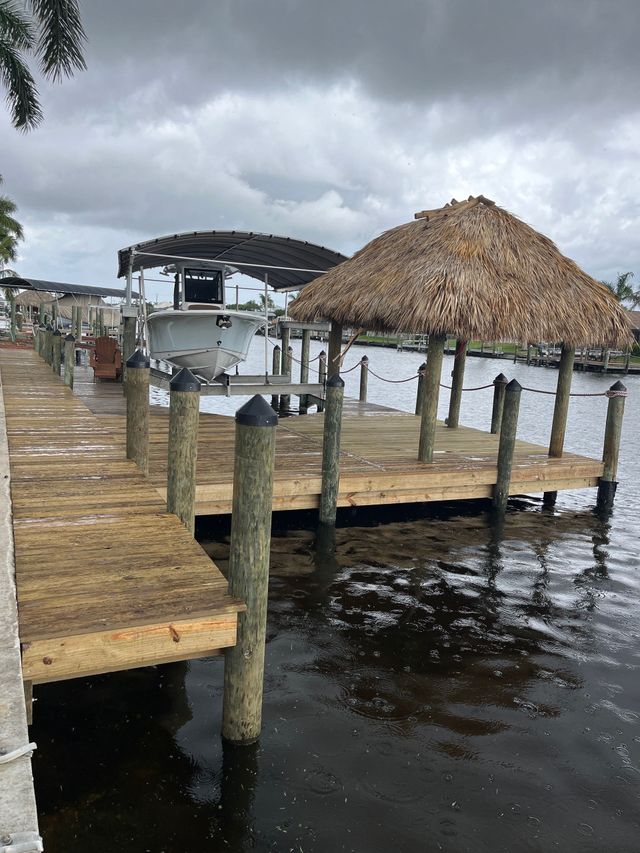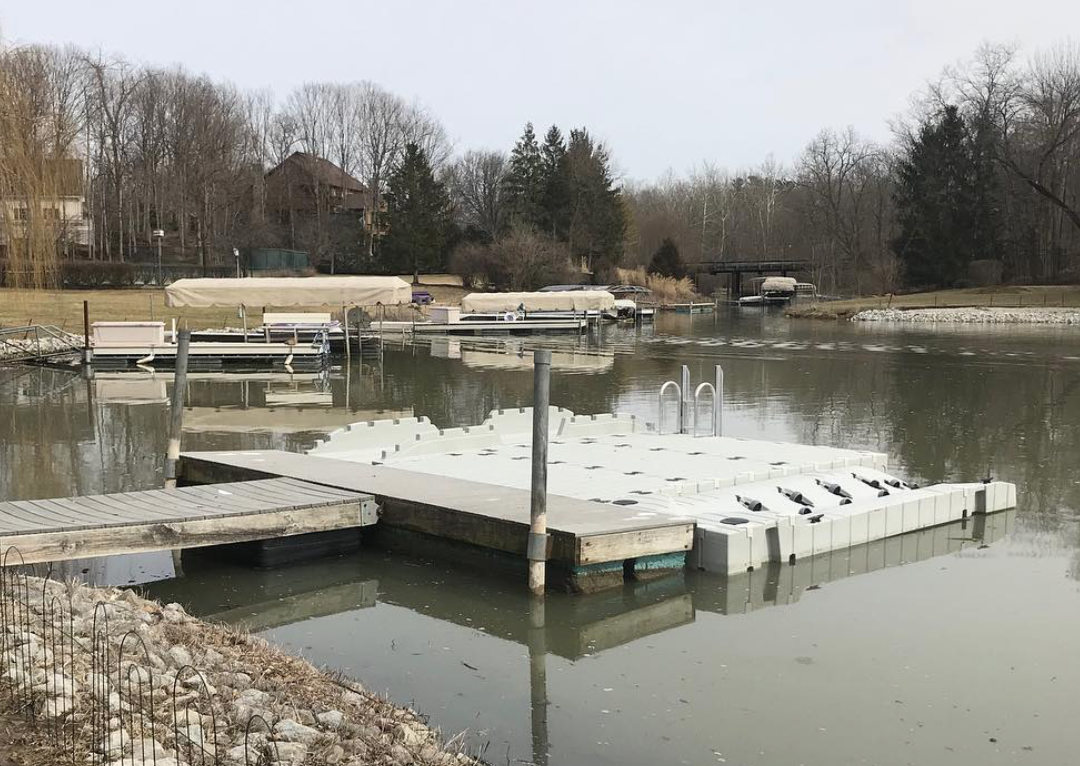How to Choose the Right Solution for Your Dock Repairs
How to Choose the Right Solution for Your Dock Repairs
Blog Article
Efficient Dock Repair Service Techniques: Ensuring Structural Honesty
Making certain the structural honesty of anchors through efficient fixing strategies is paramount for the durability and safety and security of aquatic facilities. This includes a multi-faceted technique beginning with extensive evaluations making use of sophisticated technologies like sonar equipment and from another location operated vehicles (ROVs) to find both visible and hid problems. Consequently, picking the ideal fixing materials, such as corrosion-resistant alloys and composite products, is vital for durability. Structural reinforcement approaches, including the implementation of cross-bracing systems and load-distribution plates, play an important duty in mitigating stress and anxiety factors. The importance of these strategies comes to be apparent when exploring advanced fixing methods and preventative maintenance strategies.
Evaluating Dock Damage
Evaluating dock damage is a vital very first step in making certain the architectural integrity and safety of any type of docking facility. Trick aspects to analyze consist of the dock's structure, pilings, decking, and equipment (Dock Repairs).
Architectural engineers or certified inspectors usually carry out these evaluations making use of specialized strategies and devices. Undersea examinations may utilize finder devices or remotely ran lorries (ROVs) to spot immersed damage. Over water, visual inspections are enhanced by making use of moisture meters and other diagnostic tools to reveal underlying concerns not right away visible to the naked eye.

Picking Fixing Products
Selecting the appropriate repair work materials is a critical action in the dock reconstruction process, one that straight affects the durability and performance of the fixed structure. Material selection must be driven by variables such as environmental problems, load-bearing demands, and compatibility with existing dock components.
In addition to timber, composite products are increasingly prominent as a result of their sturdiness and reduced maintenance demands. Composites, usually made from a mix of plastic and timber fibers, offer exceptional resistance to rot, insects, and UV damage. For steel docks, choosing corrosion-resistant alloys such as galvanized steel or marine-grade aluminum is crucial to prevent corrosion and guarantee structural stability in saline water problems.
Epoxy resins and marine-grade sealers are indispensable for repairing fractures and securing joints, offering a water resistant obstacle and boosting the dock's overall stamina. By thoroughly picking high-grade products, dock repair work can achieve durable outcomes, thereby safeguarding against future degradation and making certain secure, reputable use.
Architectural Reinforcement Techniques
Reliable architectural reinforcement strategies are vital in ensuring the stability and durability of dock repairs. This method is especially effective for docks exposed to heavy loads or harsh ecological problems.
An additional vital strategy is the application of fiber-reinforced polymers (FRP) These products use high strength-to-weight proportions and outstanding resistance to corrosion, making them optimal for strengthening wooden or concrete anchors. FRP can be applied in sheets or strips and bound with epoxy resins to enhance structural honesty.
Supporting and securing systems likewise play a crucial function in architectural reinforcement. Cross-bracing, using steel or wooden light beams, can combat lateral pressures, lowering swaying and movement. Securing systems, such as helical piers or driven stacks, provide a stable foundation by moving loads to deeper, much more steady dirt layers.
Last but not least, the assimilation of load-distribution plates can help disperse weight extra uniformly throughout the dock's surface, alleviating local anxiety factors. These strategies collectively make sure that anchors remain safe and durable, with the ability of holding up against the roughness of their operational atmosphere.
Advanced Repair Approaches

One more innovative strategy entails undersea welding, which permits for repair services to be important source performed without the requirement to dewater the area. This approach is especially beneficial for resolving structural issues in submerged dock components, ensuring minimal interruption to operations. Improved welding methods, paired with robotic systems, supply accuracy and dependability, thereby expanding the life-span of the dock.
Furthermore, cathodic defense systems are carried out to avoid corrosion in metal dock structures. By making use of sacrificial anodes or amazed present systems, these strategies successfully mitigate the electrochemical processes that lead to product deterioration.
Last but not least, advanced surveillance innovations, such as structural health surveillance (SHM) systems, offer real-time information on the condition of dock frameworks. These systems enable aggressive maintenance and timely treatments, inevitably making certain the long-term architectural stability of the dock.
Upkeep and Prevention
Upkeep and avoidance are fundamental concepts that underpin the long life and safety of dock structures. Routine examinations are paramount, enabling early discovery of wear and tear, prospective weaknesses, and ecological impacts. A proactive method, including regular look for corrosion, rot, and structural shifts, minimizes expensive fixings and extends the dock's operational life.
Precautionary steps must include using safety finishings to metal parts to protect against rust and utilizing treated wood to resist decay. Furthermore, making sure proper water drainage and air flow can stop water build-up, which is a typical source of architectural destruction. Incorporating quality materials and adhering to producer guidelines during building and construction and repair service stages additionally play crucial functions in improving sturdiness.

Training workers her latest blog in dock maintenance ideal methods makes certain constant application of preventative procedures. Leveraging technological developments, such as drones for evaluations and sensors for real-time monitoring, can further improve maintenance initiatives. By focusing on upkeep and avoidance, dock owners can ensure architectural integrity, functional security, and cost-effective monitoring over the dock's lifespan.
Conclusion
To conclude, keeping the architectural stability of marine centers necessitates thorough dock repair work strategies. my blog Comprehensive evaluations utilizing sophisticated tools reveal both noticeable and hid damages, while the option of appropriate repair materials improves toughness. Implementing architectural reinforcement methods addresses stress and anxiety factors efficiently. Advanced repair service methods, coupled with regular maintenance methods, ensure the dock continues to be functional and secure under diverse environmental conditions. Adopting these strategies significantly extends the life expectancy and capability of aquatic framework.
Guaranteeing the architectural honesty of anchors through effective repair methods is vital for the longevity and safety of marine centers.Selecting the appropriate fixing products is an essential step in the dock repair process, one that straight affects the durability and performance of the fixed framework.Effective architectural support techniques are vital in ensuring the stability and durability of dock fixings. By prioritizing maintenance and avoidance, dock owners can make certain structural stability, operational safety, and affordable administration over the dock's life expectancy.
In final thought, maintaining the structural integrity of marine centers necessitates extensive dock repair service methods.
Report this page